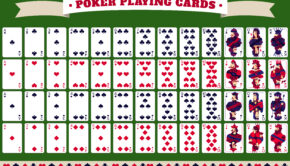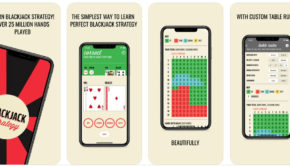The Art of Outsmarting: A Journey Through the World of Trick-Taking Games
Trick-taking games are a captivating category of card games, known for their blend of strategy, skill, and sometimes luck. The essence of these games lies in winning ‘tricks’—each player plays a card and the highest card, as per specific rules, wins the trick. These games, though varying in rules and styles, share the common thrill of outmaneuvering opponents.
A Brief History of Trick-Taking Games
The history of trick-taking games is rich and diverse, originating from early card games in Europe. The 16th century saw the birth of games like Whist, which later evolved into modern favorites like Bridge. As these games spread worldwide, they adapted to different cultures and preferences, resulting in the variety of games we enjoy today.
Hearts: A Game of Avoidance
In the Hearts card game, the goal is to avoid winning certain tricks. This game, typically involving four players, uses a normal deck minus the jokers. The aim is to avoid collecting hearts and the queen of spades, as these carry penalty points. The game concludes when a player reaches a set score, and the one with the lowest score wins.
How to Play Hearts
In Hearts, the game kicks off by distributing all cards equally among the players. With each round, there’s an interesting twist: players pass three cards to another player, and the direction of this exchange varies every round. The action starts with whoever has the two of clubs. During each trick, players are required to play a card matching the suit that was led, if they have one. If they don’t, they’re free to play any card. The highest card of the leading suit, or the highest spade if a spade is played, wins the trick. This engaging cycle continues until a player reaches a specific point threshold. At that juncture, the player with the least points emerges as the victor of the game.
Spades
Spades is another popular trick-taking game, often played in partnerships. Like Hearts, it uses a deck of 52 cards. The twist in Spades is that the spade suit always trumps the other suits, making the game’s strategy more complex and engaging.
How to Play Spades
In Spades, players start by bidding the number of tricks they expect to win. The gameplay follows a similar pattern to Hearts, with players required to follow the led suit if possible. Spades can’t be led until they are ‘broken’ (played on a trick where a player couldn’t follow suit). The game proceeds until the agreed number of rounds is completed. Scores are calculated based on the bids and tricks won, and the highest scoring team or player wins.
Bridge: A Game of Sophistication
Bridge is one of the most sophisticated trick-taking games, often associated with high levels of strategy and skill. It’s played by four players in two partnerships with a standard 52-card deck. The game consists of two main parts: bidding and playing the hand.
How to Play Bridge
Bridge begins with a bidding process, where players declare how many tricks they think their partnership can win. The gameplay is similar to other trick-taking games, with a few additional rules regarding the bidding and play. The complexity of Bridge lies in the bidding system and the communication between partners about their hand strengths and playing strategies.
Pinochle: A Blend of Tricks and Melds
Pinochle is a unique trick-taking game that combines the elements of trick-taking and melding (creating combinations of cards). It’s typically played by two to four players and uses a special 48-card pinochle deck.
How to Play Pinochle
The game starts with dealing a set number of cards to each player and bidding on the number of points a player thinks they can score. The gameplay involves winning tricks and forming melds from the cards won. The combination of trick-taking and meld strategy makes Pinochle a game that requires both tactical play and foresight.
Euchre: A Fast-Paced Team Game
Euchre is a quick and engaging trick-taking game, often played by four players in two teams. It uses a shorter deck, typically 24 or 32 cards, focusing on the 9s through Aces.
How to Play Euchre
The game begins with dealing five cards to each player and turning up the top card of the remaining deck. Players bid on whether they can win the majority of the tricks with a particular suit as trump. Gameplay is swift, with a focus on outsmarting the opposing team through strategic play of cards and reading the opponents.
Whist: The Classic Trick-Taking Game
Whist is one of the oldest and simplest trick-taking games. It’s typically played by four players and uses a deck of cards. The game is straightforward, with few rules, making it an excellent introduction to the trick-taking genre.
How to Play Whist
Players are dealt an equal number of cards, and the last card dealt determines the trump suit. The gameplay involves following the led suit and trying to win tricks with higher cards or with trumps. The game continues until all cards are played, and the team with the most tricks wins.
Conclusion
Trick-taking games are a testament to the timeless appeal of strategic card play. Each game, from Hearts to Whist, offers a unique blend of strategy, skill, and social interaction. Whether you’re a seasoned player or new to the genre, these games provide endless hours of entertainment and mental challenge.
Cover Image by Freepik















